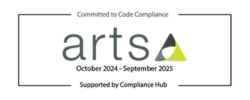Study identifies benefits of flash blood glucose monitoring
)
Flash helps improve overall blood glucose levels by reducing high and low glucose levels in people with type 1 diabetes and has a positive effect on their treatment satisfaction, according to new study
The benefits of flash blood glucose monitoring for people with type 1 diabetes have been revealed in the New England Journal of Medicine.
An article, entitled Intermittently Scanned Continuous Glucose Monitoring for Type 1 Diabetes, has revealed flash helps improve overall blood glucose levels by reducing high and low glucose levels in people with type 1 diabetes and has a positive effect on their treatment satisfaction.
These improvements were realised without an increase in the amount of insulin used, suggesting glucose data obtained by the flash monitor allowed people to adjust their therapy to improve their outcomes.
Funded by Diabetes UK, Dr Lalantha Leelarathna and a team of investigators from eight UK centres conducted a randomised controlled trial to understand how second-generation Flash technology compares to traditional finger prick testing for helping people with type 1 diabetes to manage their condition.
In total 156 people with type 1 diabetes, who had above-target blood glucose levels, took part in the trial.
For 24 weeks, 50 per cent of the participants monitored their glucose levels with flash and the others continued using finger prick blood testing.
At the start of the study both groups had similar three-month average blood glucose levels (assessed by an HbA1c blood test).
After 24 weeks, those participants who used Flash had reduced their HbA1c from an average of 8.7 per cent to 7.9 per cent, a reduction of 0.8 percentage points.
Lowering HbA1c by this amount can decrease the risk of developing diabetes complications in the future by up to 40 per cent.
In comparison, those in the finger prick group had reduced their HbA1c on average by only 0.2 percentage points by the end of the study. (Between group difference of 0.5 percentage points).
In addition, those using the flash technology spent an extra 130 minutes a day with their blood glucose levels in the target range (between 3.9 and 10 mmol/L) and 43 minutes per day less with dangerously low blood glucose levels (below 3.9 mmol/L).
The researchers further discovered that flash had a positive impact on quality of life.
Participants in the Flash group reported they were happier with their diabetes treatment and that using the technology improved glucose monitoring satisfaction.
Flash glucose monitoring technology was first made available through the NHS in 2017.
Currently, more than half of people living with type 1 diabetes are prescribed Flash on the NHS in England.
In March 2022, the National Institute of Health and Care Excellence (NICE) recommended flash or other continuous glucose monitoring for use in all adults with type 1 diabetes, and Flash for some people with type 2 diabetes who have two or more insulin injections a day.
Dr Lalantha Leelarathna, Diabetes UK-funded researcher at the University of Manchester, said: “Ability to monitor glucose without painful finger-sticks is life-changing for many people living with type 1 diabetes.
“With the use of second generation intermittently scanned continuous glucose monitoring, we found significant improvements in average glucose levels and a reduction in both high and low glucose levels, helping people to spend more time with normal glucose levels.
“We call for universal funding of this life-changing technology for all people living with type 1 diabetes across the world. Further work is underway to assess the cost-effectiveness of this technology.”
To read the study, click here.



)
)
)
)

)
)
.jpg/fit-in/1280x9999/filters:no_upscale())
.png/fit-in/1280x9999/filters:no_upscale())
)
)
)
